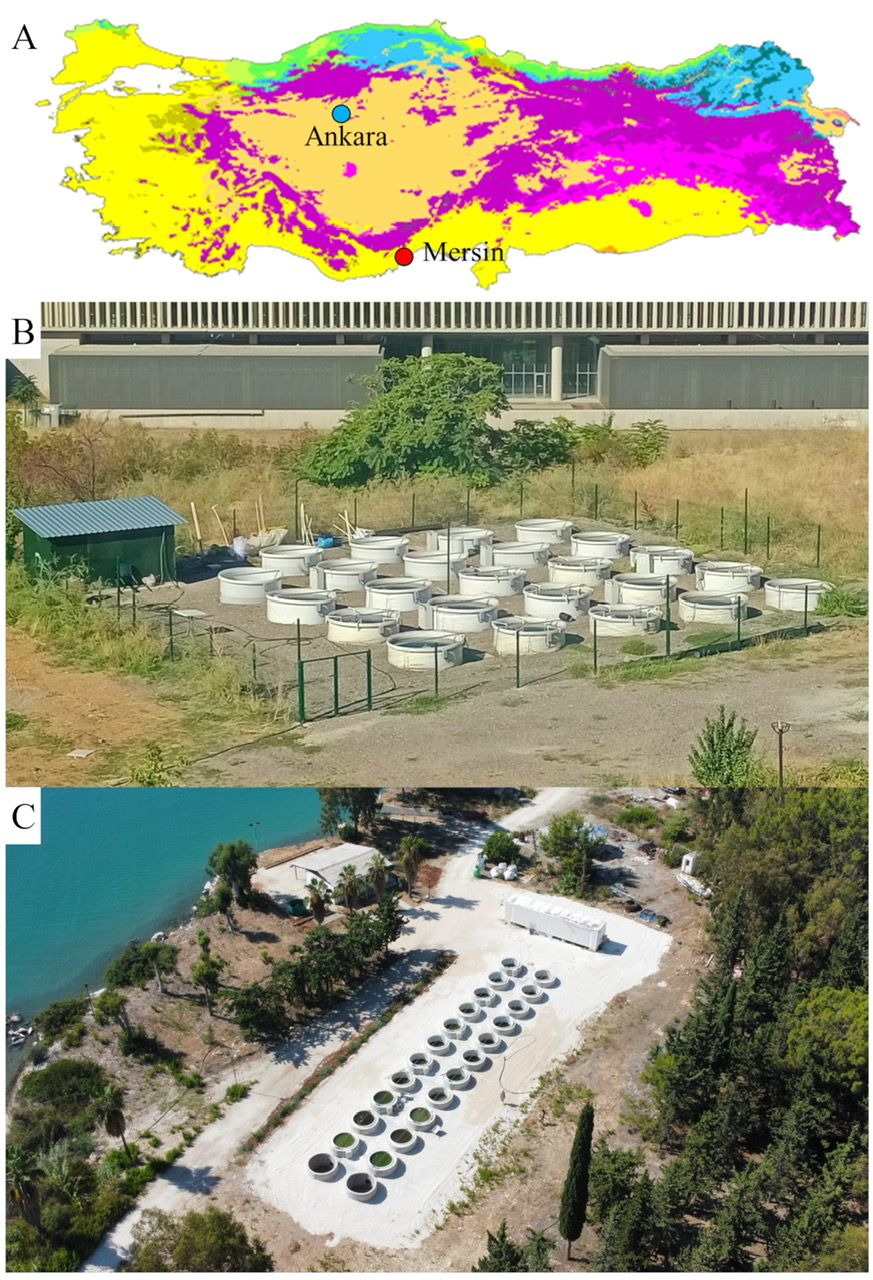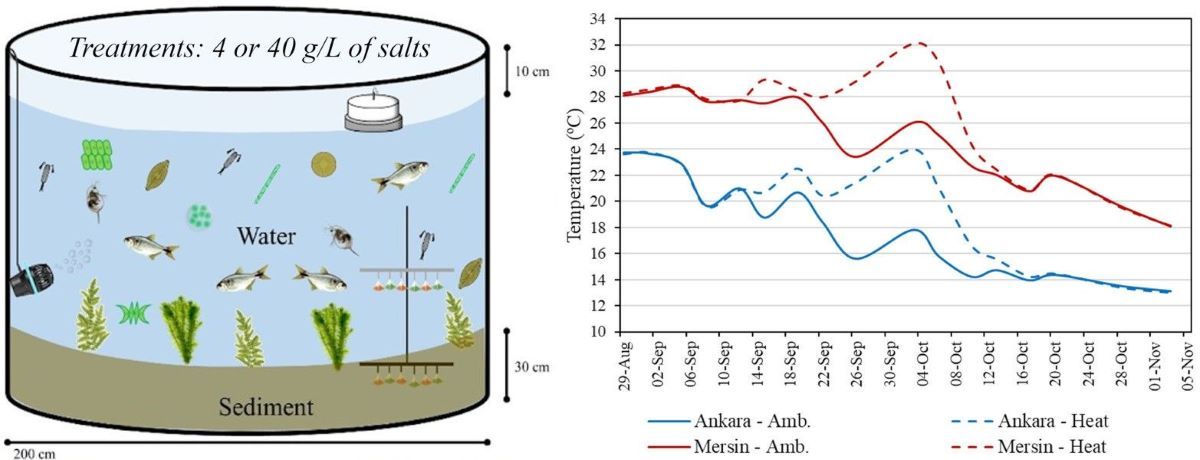Facilities
Transnational Access
Metadata & Data
Papers & Reports
Knowledge Base
Heatwave experiment in mesocosm systems with contrasting salinities
2nd December 2022
We ran a heatwave experiment at two salinities under eutrophic conditions with 4 replicates of each treatment at METU Mesocosm System. The experiment was conducted at two different localities, with contrasting climatic conditions: Ankara (Semi-arid, steppe and cold climate (BSk), mean temperature of 12.6°C); and Mersin (Mediterranean, temperate climate with dry and hot summer (Csa), mean temperature of 20.1°C) (Figure 1).

During the first three weeks of the experiment, there was no heating in all mesocosms, followed by two weeks of a heatwave, with a 6ºC increase in half of the mesocosms. Then the mesocosms were monitored for the next three weeks during the recovery period with no heating in all mesocosms. The two salinities selected were: 4 ppt and 40 ppt. At lower salinities, fish (Alburnus alburnus) was added and survived during the entire experiment, whereas at higher salinity, Artemia was added but survived only in the first weeks. The mesocosms have 30cm of sediment and submerged macrophytes (Ruppia spp.). The salinity in all mesocosms was adjusted one month before the start of the experiment through the additions of NaCl and Na2SO4. After that, plankton and sediment inoculums from systems with different salinities were added in equal amounts to all mesocosms.
The sampling of the mesocosms was conducted twice a week. Nutrient loading, water level adjustment, as well as salt dosing/adjustment were carried out weekly. The experiment started on 29th August and ended on 3rd November (Figure 2). Several other side experiments were conducted in Ankara Mesocosms facility by AQUACOSM-plus TAs. Those experiments aimed to understand the effects of zooplankton or Artemiagrazing on phytoplankton and the impacts of nutrient additions (nitrogen, phosphorus, and silica) on phytoplankton. The experiments were performed before, during and after the heatwave.
The measured variables included standard physicochemical variables, major ions, phytoplankton, ciliates, HNF, zooplankton, diel-O2-metabolism, GHG release, metagenomic samples (bacteria/ eukaryotes), pigments, DOC/TOC, among others.
